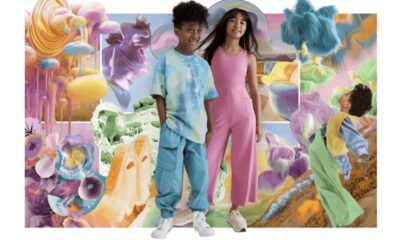LAW
Some Basic Concepts in Personal Injury Law Every Accident Victim Should Know

Accidents can happen when you least expect them. They leave victims in pain, confused, and unsure of what steps to take next. Understanding the basics of personal injury law can make all the difference in securing the compensation you deserve.
In this guide, we will discuss some fundamental concepts in personal injury law that every accident victim should know to protect their rights and seek justice. We also highly recommend seeking the advice of a personal injury attorney for personalized legal guidance.
Key Elements of a Personal Injury Case
When pursuing a personal injury claim, several essential components determine the success of your case. Understanding these elements can help you navigate the legal process with more confidence.
1. Duty of Care
In personal injury cases, the responsible party must have owed a duty of care to the victim. This means that they had a legal obligation to act in a manner that would not cause harm.
For example, a doctor has a duty to provide appropriate medical treatment, while a property owner has a duty to keep their premises safe for visitors. If the responsible party fails to fulfill their duty of care, they may be held liable for any resulting injuries.
2. Negligence
Negligence occurs when someone fails to meet the expected standard of care, resulting in harm to another person. It is often the foundation of personal injury cases. To prove negligence, four elements must be demonstrated:
- Duty of care: The responsible party had an obligation to act reasonably.
- Breach of duty: They failed to meet that obligation.
- Causation: Their actions directly caused the injury.
- Damages: The victim suffered physical, emotional, or financial harm.
3. Liability
Liability refers to the legal responsibility for the injury. In many cases, the person or organization responsible for the accident may be held liable for the damages caused. This could include paying for medical bills, lost wages, pain and suffering, and more.
- Example: If someone slips on a wet floor in a store because it wasn’t properly marked, the store owner may be liable for the accident.
4. Types of Damages
When pursuing a personal injury claim, victims can seek different types of damages, including:
- Economic damages: These cover quantifiable losses such as medical bills, lost wages, and rehabilitation costs.
- Non-economic damages: These compensate for pain, suffering, emotional distress, and loss of enjoyment of life.
- Punitive damages: In cases of extreme negligence or intentional harm, punitive damages may be awarded to punish the wrongdoer and deter future misconduct.
5. Statute of Limitations
Every personal injury case is subject to a time limit, known as the statute of limitations. This is the period during which an injured person can file a lawsuit. In many places, the statute of limitations for personal injury claims is between one and three years from the date of the accident.
- Tip: It’s important to act quickly and consult with legal professionals to ensure your claim is filed within the allowed time frame.
The Importance of Evidence in Personal Injury Cases
To strengthen your case, evidence plays a crucial role. Without strong evidence, it can be difficult to prove liability or the extent of your damages. Some key pieces of evidence to collect include:
- Photographs: Take pictures of the scene, your injuries, and any damages.
- Witness Statements: Gather testimonies from anyone who saw the accident.
- Medical Records: Keep all records of your treatment and medical history related to the injury.
- Police Reports: If the accident involved law enforcement, these reports can be important evidence.
Final Thoughts
Understanding these basic concepts of personal injury law can help you make informed decisions if you are involved in an accident. It’s important to know your rights, gather the necessary evidence, and consult with legal professionals who can guide you through the process of seeking fair compensation. Personal injury cases can be complex, but with the right knowledge and support, you can protect yourself and get the justice you deserve.
LAW
Defense Attorney Near Me

You may find yourself searching for a defense attorney near me during times of stress or uncertainty. When facing legal challenges, having the right defense attorney by your side is crucial. They stand as your guide, offering strong support and clear advice. This decision is not just about location. It’s about choosing someone who listens, understands, and fights for you. A nearby defense attorney often offers more than convenience. They can provide local insight and quick response times. You deserve to feel confident and secure knowing you have a dedicated professional in your corner. You want someone who understands the weight of your situation and is ready to take immediate action. Navigating the legal world can be overwhelming, but with a trusted defense attorney nearby, you are not alone. They will walk with you, ensuring that your rights are protected and your voice is heard.
Understanding the Role of a Defense Attorney
A defense attorney is your legal protector. They represent you in criminal cases, working tirelessly to ensure your side of the story is heard. Their responsibilities include gathering evidence, interviewing witnesses, and crafting a strong legal strategy. This role demands not only legal skills but also empathy and dedication. Your attorney serves as both an advocate and a counselor, guiding you through complex legal processes. According to the United States Courts, understanding your rights and the intricacies of the legal system can significantly impact the outcome of your case. By selecting an attorney who is both skilled and compassionate, you set the stage for the best possible defense. For more detailed information on criminal laws and penalties, visit the Law Office of Michael Stefanos.
Why Local Matters
Choosing a “defense attorney near me” is more than a matter of convenience. Local attorneys bring an understanding of regional laws and court systems, which can be invaluable. They often have established relationships within local legal circles, which can facilitate more effective communication and negotiation. Being nearby allows them to dedicate more time to your case, offering the advantage of immediacy in actions and decisions. Furthermore, their proximity often translates to better availability for meetings and court appearances. This local advantage can be crucial in developing a tailored defense strategy that considers all aspects of your case.
Factors to Consider When Choosing a Defense Attorney
When selecting a defense attorney, consider these key factors:
- Experience: Look for an attorney with a proven track record in similar cases.
- Communication: Ensure they communicate clearly and are available to answer your questions.
- Reputation: Research online reviews and seek recommendations from trusted sources.
Choosing the right attorney can profoundly affect your case’s outcome. For help with finding a lawyer, you might consult resources like the American Bar Association.
Potential Costs Involved
Understanding the potential costs involved in hiring a defense attorney is essential. Legal fees can vary widely based on experience, case complexity, and location. Here’s a simple comparison to help you understand general expectations:
| Service | Average Cost |
|---|---|
| Initial Consultation | Free to $300 |
| Hourly Rate | $150 to $700 |
| Flat Fee for Misdemeanor | $1,000 to $3,000 |
| Flat Fee for Felony | $3,000 to $10,000+ |
Discuss cost structures with potential attorneys upfront. Ask about any additional fees and understand what services are included.
The Importance of Trust
Trust is the foundation of any attorney-client relationship. You should feel comfortable sharing sensitive information with your attorney. If you feel unsure or uneasy, it may be wise to continue your search. An attorney who listens and responds with understanding helps build the trust necessary for a collaborative relationship. This trust will be crucial as you work together to build a defense that aligns with your needs and expectations.
Final Thoughts
Facing legal challenges is never easy. However, with a “defense attorney near me,” you gain a partner who understands the legal landscape and is committed to your defense. Whether you’re navigating a minor issue or a more serious charge, the right attorney provides the guidance and support you need. Take the time to research and choose someone who aligns with your values and needs. Doing so can significantly influence the journey ahead, offering peace of mind and a positive impact on your case’s outcome.
LAW
What To Do If Your Ex Stops Paying Court Ordered Support

Dealing with the sudden halt of court-ordered support can shake your stability. Whether it’s child support or spousal maintenance, you’re left wondering how to manage. Immediate action is needed to address this issue. You are not alone in facing this challenge. Many encounter this roadblock, and there are clear steps to follow. First, understand the factors that influence support payments. You may ask, “What is alimony?” Alimony is financial support from one ex-spouse to another post-divorce. It ensures financial fairness and continuity. When these payments stop, it disrupts your planned financial security. Start by reviewing your court order. Check the specifics of the payment terms. Confirm whether the non-payment was accidental or intentional. If intentional, the next step is to contact the legal system. Your local courthouse or legal aid organization can guide you. Remember, time is critical. Addressing the situation swiftly helps secure your financial future.
Steps to Take
When your ex stops paying, follow these steps. First, examine the court order. This order lists the payment amount and schedule. Make sure you know these details. If there is a misunderstanding, clarify it with your ex. Communication might solve the issue quickly.
Next, gather evidence of missed payments. Collect bank statements or payment records. These documents are crucial if you need to take legal action. Then, contact a legal professional or family law advisor. They can offer guidance. Legal aid offices often provide assistance at low or no cost. Access more information about legal aid through Legal Services Corporation.
Contact the Court
If payments do not resume, you may need court intervention. File a complaint about non-payment. The court can enforce the original order. Possible actions include wage garnishment or contempt of court charges. The court’s involvement signals seriousness and often prompts payment. Understand that court procedures can vary by location. Ensure you follow the correct process by consulting your courthouse.
Options for Support Enforcement
Various enforcement options exist. Wage garnishment involves automatically deducting payments from wages. Seizing tax refunds is another possibility. The court might also impose fines or suspend licenses. These measures encourage compliance with orders.
Comparison of Enforcement Options
| Enforcement Option | Action Taken | Effectiveness |
|---|---|---|
| Wage Garnishment | Directly deducts payment from wages | Highly effective |
| Seizing Tax Refunds | Redirects tax refunds | Effective |
| Suspending Licenses | Revokes driving or professional licenses | Moderately effective |
| Fines and Penalties | Imposes additional financial penalties | Moderately effective |
Seek Mediation
Mediation might be a viable option. It offers a neutral ground for discussion. Mediators help each party reach an agreement. This path often resolves conflicts without court involvement. Resources for mediation can be found at local family courts or community centers.
Consider Long-term Solutions
Think about the long-term financial impact. Adjust your budget to account for missed support. Explore financial planning resources. Consider job training or education programs to increase earnings. Your stability is a priority.
Conclusion
When your ex stops paying court-ordered support, it creates stress. Yet, you have options to regain control. Start with understanding, communication, and documentation. Then, move to legal avenues if necessary. Consider mediation for peaceful resolution. Finally, secure your financial future by planning for changes. Take these steps to empower yourself and ensure your family’s wellbeing.
LAW
New Jersey DWI/DUI Defense Lawyer

Facing a DWI/DUI charge in New Jersey can feel overwhelming. A New Jersey DWI/DUI defense lawyer can guide you through this challenging time. You need someone skilled who deeply understands New Jersey laws. This professional ensures your rights remain intact while offering solid defense strategies. You want to avoid harsh penalties that can impact your life significantly. The right lawyer will explore every option, making sure nothing is overlooked in your defense. Remember, everyone makes mistakes. However, you have the chance to protect your future. With the right assistance, you can navigate this situation. Your lawyer will address any concerns you have, provide clear answers, and work diligently on your behalf. Having an experienced lawyer can make a significant difference in the outcome. Your focus should be on moving forward and learning from this experience. Let your attorney handle the legal complexities, so you can find a path toward a better future.
Understanding DWI/DUI Laws in New Jersey
New Jersey has strict laws to combat impaired driving. It’s important to understand these regulations to comprehend the consequences. You need to know the distinction between DWI and DUI. In New Jersey, these terms are often used interchangeably, representing driving under the influence of alcohol or drugs. The law considers a blood alcohol concentration (BAC) of 0.08% or higher as legally impaired. For drivers under 21, any detectable alcohol is illegal.
Penalties for DWI/DUI in New Jersey can vary. First-time offenders might face fines, license suspension, or mandatory community service. Subsequent offenses can lead to jail time, hefty fines, and longer suspensions. The table below highlights some potential penalties for DWI/DUI convictions:
| Offense | Fine | License Suspension | Other Penalties |
|---|---|---|---|
| First Offense | $250-$400 | Up to 3 months | 12-48 hours in Intoxicated Driver Resource Center |
| Second Offense | $500-$1,000 | 2 years | 30 days community service, jail time up to 90 days |
| Third Offense | $1,000 | 10 years | Mandatory 180 days in jail |
The Role of a Defense Lawyer
A competent lawyer can make navigating these complex laws easier. The lawyer evaluates your case, scrutinizes the evidence, and identifies any procedural errors that could work in your favor. They can also negotiate with prosecutors to reduce charges, potentially lessening penalties. More importantly, your lawyer will prioritize your best interests, aiming to minimize the impact on your life.
Contact a Criminal Defense Lawyer
The Law Office of Matthew V. Portella, LLC
25 Chestnut Street, Suite 2
Haddonfield, NJ 08033
Personalized Defense Strategy
Your lawyer will develop a personalized defense strategy tailored to your case. This includes reviewing the specifics of your arrest, the validity of sobriety tests, and the accuracy of any tests conducted. By pinpointing weaknesses in the prosecution’s case, your lawyer can help reduce or dismiss charges.
Long-Term Consequences
DWI/DUI convictions have long-term effects beyond immediate penalties. They can impact employment opportunities, insurance rates, and personal reputation. A lawyer’s involvement is crucial to managing these repercussions. By actively defending your rights, your lawyer helps pave the way for a brighter future, free from the shadow of legal issues.
Taking the First Step
Time is essential when facing DWI/DUI charges. Quick action allows for better preparation and a stronger defense. Contact a qualified New Jersey DWI/DUI defense lawyer as soon as possible. Remember, you’re not alone. An experienced lawyer stands by you, providing support and guidance every step of the way.
Finally, it’s worth noting that legal processes can be intricate. Always seek professional advice to ensure a thorough understanding of your situation. The State of New Jersey’s official website can provide further resources and information.
-

 FASHION10 months ago
FASHION10 months agoTop Kids Clothing Trends for 2025 – What’s In Style This Year?
-

 FASHION1 year ago
FASHION1 year agoElegant Winter Party Style: Trendy Long-Sleeve Dresses and Essential Hair Care Tips
-

 BUSINESS1 year ago
BUSINESS1 year agoHOW TO SHOP GOODWILL OUTLET STORE
-

 AUTOMOTIVE10 months ago
AUTOMOTIVE10 months agoMitsubishi Pajero 3.0 V6 – Specs, Performance & Guide
-

 HOME10 months ago
HOME10 months agoTributePrintedPics Review: A Deep Dive into Quality, Design, and Customer Experience
-

 CULTURE10 months ago
CULTURE10 months agoUncuymaza Unveiled: The Cultural Significance Behind the Craft
-

 LIFESTYLE9 months ago
LIFESTYLE9 months agoDiscovering Luuxly.com: Your Ultimate Guide to Luxury Lifestyle
-

 TECHNOLOGY10 months ago
TECHNOLOGY10 months agoztec100.com: Your Ultimate Guide to Cutting-Edge Tech Solutions
